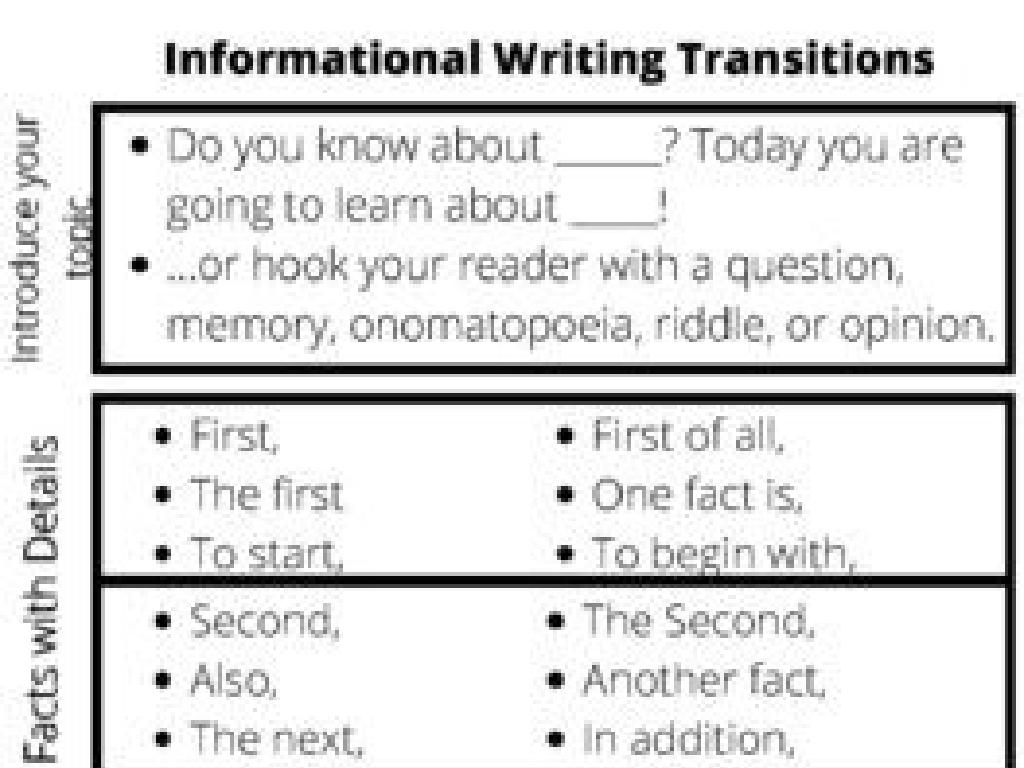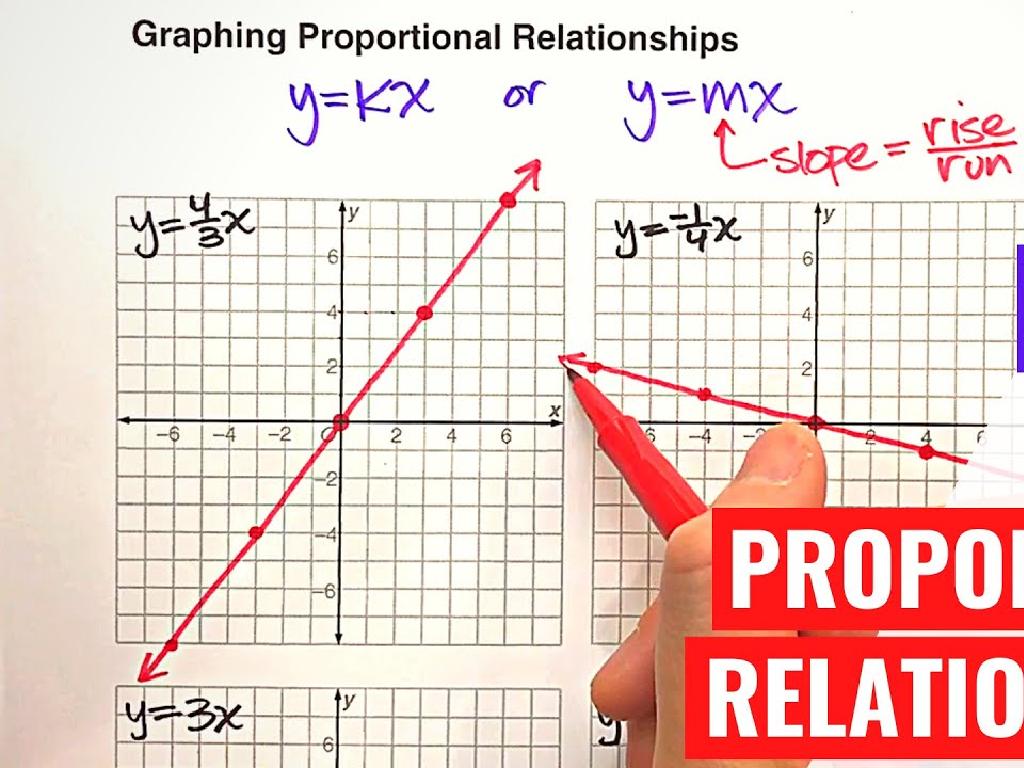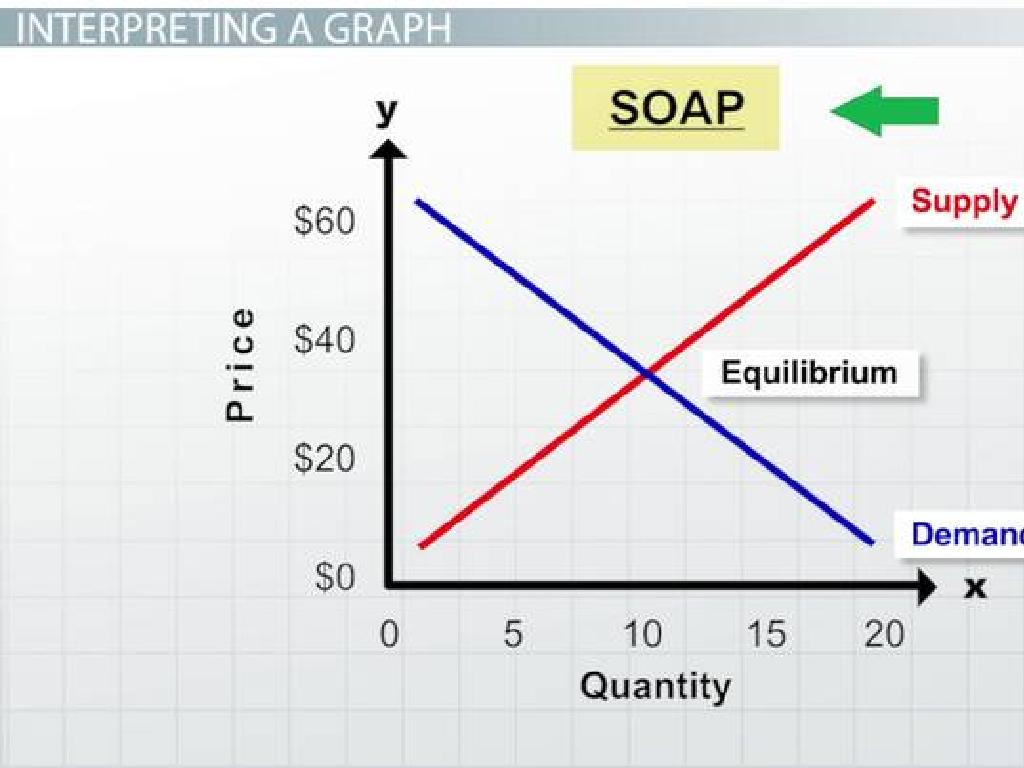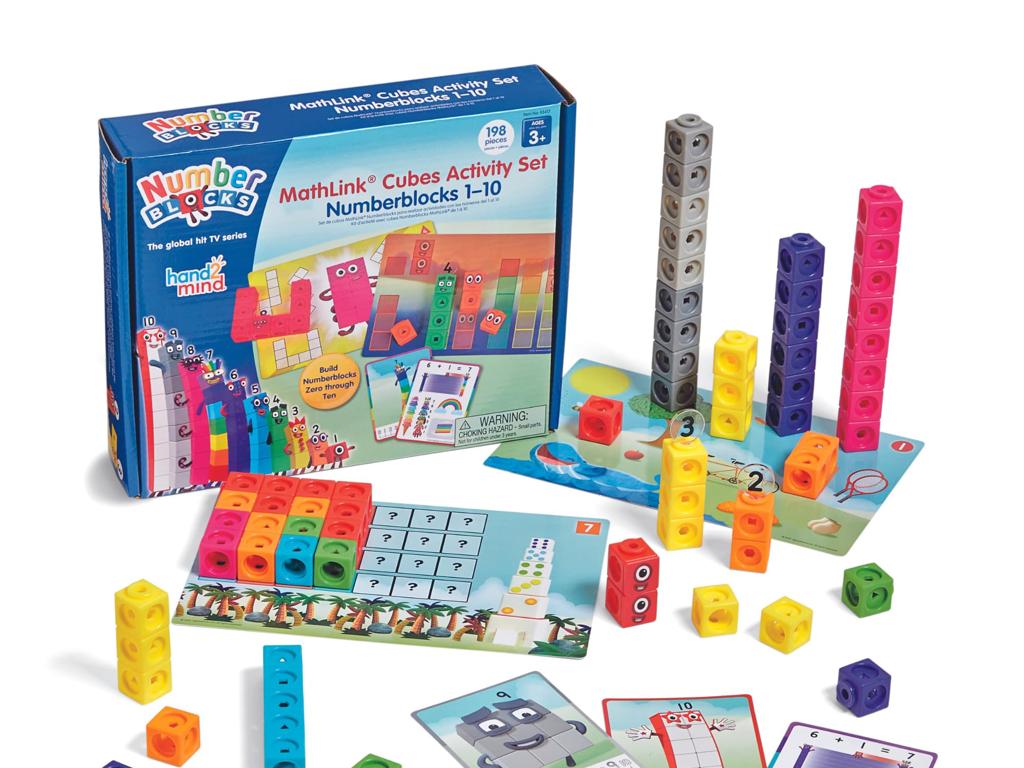Compare Concentrations Of Solutions
Subject: Science
Grade: Eighth grade
Topic: Solutions
Please LOG IN to download the presentation. Access is available to registered users only.
View More Content
Introduction to Solutions
– Understanding key concepts in science
– Defining what a solution is
– A homogeneous mixture with even distribution
– Everyday examples of solutions
– Saltwater in oceans, air we breathe, brass instruments
– Exploring the uniformity of solutions
– All parts of a solution are indistinguishable
|
This slide introduces the concept of solutions, which is fundamental in science, particularly in chemistry. A solution is defined as a homogeneous mixture where substances are distributed evenly throughout. It’s important to provide relatable examples to help students connect the concept to the real world, such as saltwater, air, and brass. Emphasize that in a solution, the different components are not visible separately; they are uniformly mixed. This understanding is crucial for later discussions on concentration and the properties of solutions. Encourage students to think of more examples and consider the uniformity of the solutions they encounter in their daily lives.
Understanding Concentration in Solutions
– Define concentration
– Concentration is the amount of solute in a solvent
– Solute vs. solvent amounts
– More solute means higher concentration
– Concentrated vs. diluted
– Compare orange juice: more water makes it diluted
– Everyday examples
|
This slide introduces the concept of concentration in solutions, which is a fundamental topic in chemistry and crucial for understanding various scientific processes. Concentration can be thought of as how ‘strong’ or ‘weak’ a solution is based on the amount of solute present in a given amount of solvent. Use everyday examples like orange juice to illustrate the concept; concentrated juice has less water and a stronger taste, while diluted juice has more water and a milder taste. Encourage students to think of other examples of concentrated and diluted solutions they encounter in daily life. This will help them grasp the concept more concretely and apply it to real-world situations.
Comparing Concentrations of Solutions
– Methods to compare concentrations
– Use ratios or percentages to express concentration levels
– Terminology: saturation levels
– ‘Saturated’ has max solute, ‘unsaturated’ less, ‘supersaturated’ has extra solute
– Visualizing concentration differences
– Compare color depth or layering in test tubes
– Impact of concentration in solutions
|
This slide aims to teach students how to compare the concentrations of different solutions. Start by explaining that concentration can be expressed in various ways, such as ratios or percentages, which indicate the amount of solute in a given volume of solvent. Introduce the terms ‘saturated’, ‘unsaturated’, and ‘supersaturated’ to describe the solute capacity of solutions. Use visual aids like colored solutions in test tubes to show how concentration can affect the appearance of a solution, with deeper colors typically indicating higher concentrations. Discuss how different concentrations can affect the properties and reactions of solutions in various contexts, such as in chemical reactions or in biological systems.
Factors Affecting Solution Concentration
– Temperature’s impact on solubility
– Higher temperatures usually increase solubility of solids in liquids.
– Pressure’s role in gas solubility
– Gases dissolve better under higher pressure conditions.
– Agitation’s effect on dissolving
– Stirring or shaking helps substances dissolve faster.
– Understanding concentration changes
|
This slide aims to explain the various factors that can affect the concentration of solutions in different scenarios. Temperature can either increase or decrease the solubility of a substance; for most solids in liquids, solubility increases with temperature. Pressure is particularly relevant for gases, as seen in carbonated beverages where CO2 is more soluble under pressure. Agitation, such as stirring or shaking, can speed up the dissolving process by moving the solute particles around. It’s important for students to understand that these factors can change how concentrated a solution becomes, which is crucial in fields like chemistry and environmental science. Encourage students to think of real-life examples where these factors play a role, such as making tea or soda fizzing when opened.
Calculating Solution Concentration
– Concentration formula basics
– Concentration = Solute amount / Solution amount
– Practice: Salt solution concentration
– Calculate concentration for a given salt solution example
– Units of concentration: Molarity
– Molarity (M) is moles of solute per liter of solution
– Understanding percent by volume
– Percent by volume is solute volume over solution volume, multiplied by 100%
|
This slide introduces the concept of concentration in solutions, which is a fundamental topic in chemistry. Start by explaining the concentration formula, ensuring students understand the terms ‘solute’ and ‘solution.’ Work through a practice problem calculating the concentration of a salt solution to apply this knowledge. Discuss units of concentration, focusing on molarity, which is commonly used in scientific calculations, and percent by volume, which is often used in everyday contexts. Provide examples and encourage students to solve problems using these units to solidify their understanding. This will prepare them for more complex topics in solution chemistry.
Real-World Applications of Solution Concentrations
– Importance of comparing concentrations
– Medicine: Dosage and concentration
– Correct dosages of medication depend on the concentration of the active ingredient.
– Environmental science and pollution
– Pollution levels in water are determined by analyzing the concentration of pollutants.
– Everyday examples of concentration
|
Understanding the concentration of solutions is crucial in many fields. In medicine, it’s vital for determining the correct dosage of drugs, ensuring safety and efficacy. For example, insulin concentration must be carefully managed for diabetic patients. In environmental science, measuring the concentration of pollutants in water bodies helps assess the impact on ecosystems and human health. Examples like the concentration of chlorine in swimming pools or fluoride in toothpaste can be used to relate the concept to everyday life. Encourage students to think of other examples where solution concentration is important, and discuss how it affects their daily lives.
Class Activity: Concentration Challenge
– Objective: Create varied concentration solutions
– Materials: Salt, water, beakers, measuring tools
– Instructions: Form groups and dissolve salt
– Each group will use different salt amounts in water
– Label each solution’s concentration
– Use ratios to express salt-to-water concentration
|
This activity is designed to help students understand the concept of solution concentration. Students will work in groups to dissolve varying amounts of salt in water, which will visually demonstrate the concept of concentration. They will use measuring tools to ensure precision and will label their solutions with the appropriate concentration ratios. This hands-on experience will reinforce their understanding of solutes, solvents, and concentration levels. Possible variations for different groups could include using different volumes of water or different types of solutes to see how these variables affect the dissolving process.
Conclusion: Understanding Solution Concentration
– Recap comparing concentrations
– Review how to compare solution concentrations and why it matters.
– Significance in various fields
– Concentration knowledge is vital in chemistry, medicine, and environmental science.
– Encourage class discussion
– Address any questions
|
As we wrap up, revisit the main points about comparing solution concentrations, emphasizing the practical applications in real-world scenarios such as pharmaceuticals, industrial processes, and ecological systems. Highlight the importance of understanding concentration for future scientific studies and everyday decision-making. Open the floor for students to ask questions or start a discussion, which will help reinforce their learning and clarify any uncertainties. Encourage them to think critically about how concentration affects various aspects of life and to explore more examples of solutions in their environment.






